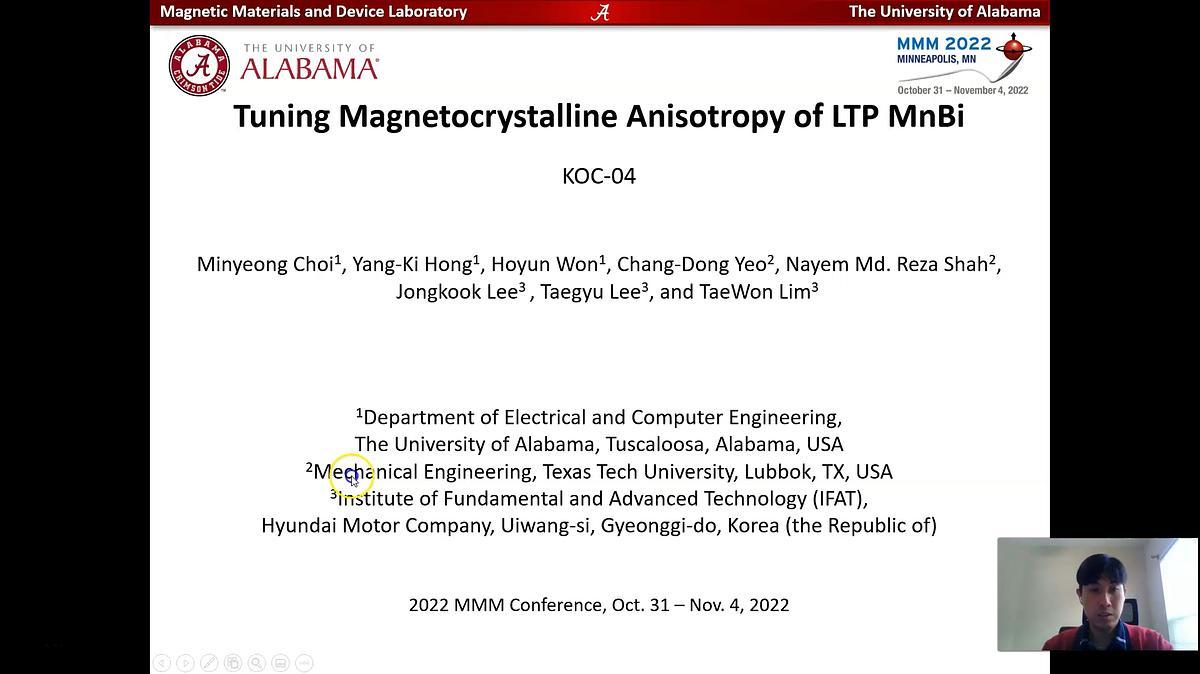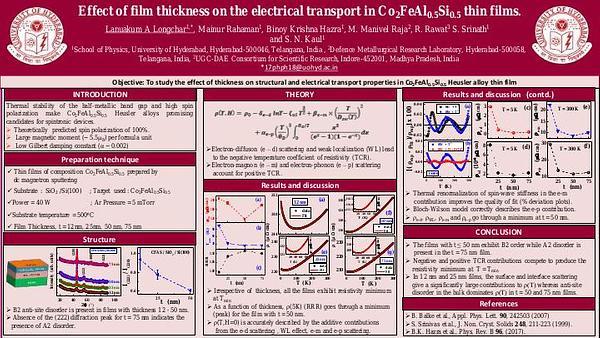
Premium content
Access to this content requires a subscription. You must be a premium user to view this content.

technical paper
Tuning Magnetocrystalline Anisotropy of LTP MnBi*
Spin orientation of LTP-MnBi can be controlled by partially substituting Bi of hexagonal LTP-MnBi with either the third alloying element or temperature. The spin reorientation occurs at about 90 K from ab-plane (0 - 90 K) to c-axis (T > 90 K) of LTP MnBi 1. Sakuma et al. have performed first-principles calculations on Sn-doped Mn (Bi1-xSnx) and found that magnetocrystalline anisotropy constant (Ku) increases to about 3 MJ/m3 (x = 0.1) from -0.5 MJ/m3 (x = 0.0) at 0 K and then remains unchanged up to x = 0.3 2. However, Stutius et al. reported -0.15 MJ/m3 (x = 0.0) of the measured Ku at 4.3 K 3. Therefore, Sakuma’s calculated Ku (x = 0.0) does not agree with the experimental Ku in 3. This may be attributed to 300 K lattice constants in 2 used in the calculation. Sakuma did not relax the MnBi formula unit to obtain lattice constants at the ground state.
In this study, we have performed first-principles calculations on Mn0.5Bi0.5, Mn0.5Bi0.25Sn0.25 (substitutional doping: SD), and (Mn0.5Bi0.5)66.7Sn33.3 (interstitial doping: ID) in Fig. 1 and used the relaxed lattice constants. Both a and c decrease from 4.287 and 6.118 Å to 3.954 and 5.456 Å, respectively, when Sn substitutes for Bi of LTP-MnBi. However, the a of ID increases to 4.611 Å, while the c decreases to 5.683 Å.
Figure 2 shows density of states for MnBi-Sn. The net magnetic moment is 7.224 μB/f.u. for LTP-MnBi, 5.034 μB/f.u. for SD, and 6.609 μB/f.u for ID. The Ku is changed from in-plane (-0.202 MJ/m3) to out-of-plane (1.711 MJ/m3) by substitutionally doping Sn and maintains in-plane with interstitially doping Sn-MnBi (-0.043 MJ/m3). Our results agree with experimental one 3, but Sakuma’s. The Curie temperature decreases from 716 K for LTP-MnBi to 445 K for SD and 285 K for ID.
- This work was supported in part by the National Science Foundation (NSF) under Grant No. 2137275.
References:
1 Michael A. McGuire, Huibo Cao, Bryan C. Chakoumakos, and Brian C. Sales, Phys. Rev. B 90, 174425 (2014).
2 Akimasa Sakuma, Yuki Manabe, and Yohei Kota, Journal of the Physical Society of Japan 82, 073704 (2013).
3 W.E. Stutius, T. Chen, and T.R. Sandin, AIP Conf. Proc. 18, 1222 (1974)

Figure 1. Magnetic structure for (a) LTP-MnBi (in-plane), (b) substitutionally (out-of-plane), and (c) interstitially (in-plane) Sn-doped MnBi.

Figure 2. Density of states for (a) LTP-MnBi (Mn0.5Bi0.5), (b) substitutionally Sn-doped MnBi (Mn0.5Bi0.25Sn0.25), and (c) interstitially Sn-doped MnBi ((Mn0.5Bi0.5)66.7Sn33.3).

